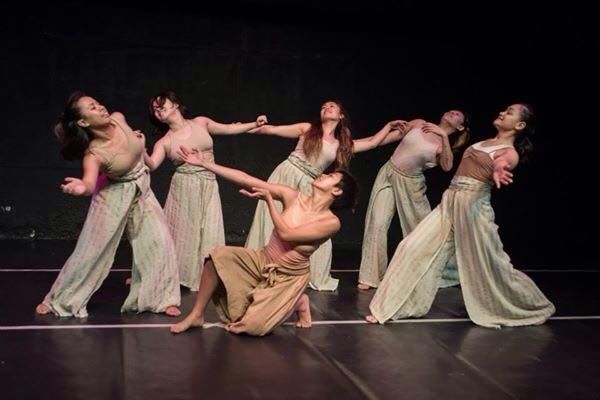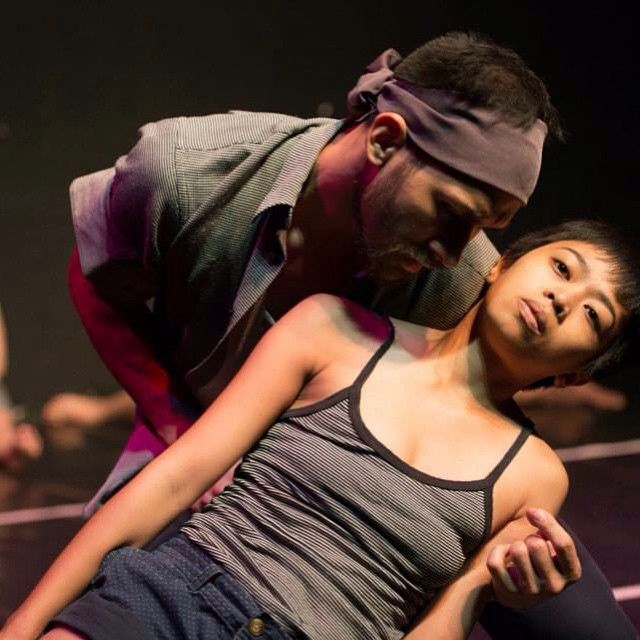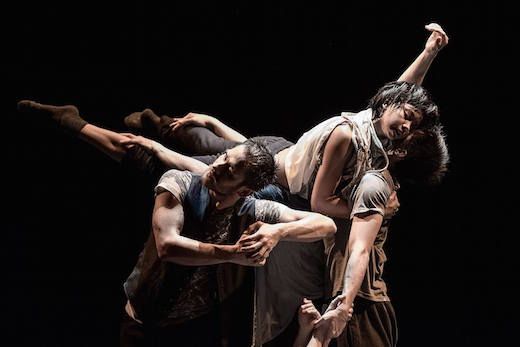Desired and desiring bodies permeate Ea Torrado’s dance performance, “Canton Atbp” at the 2015 Fringe Manila Arts Festival. Portraying the sex workers of Manila, dance couples enact the old covetousness for bodies. There is the dismal traffic of human bodies in exchange for food, a place to sleep, and other basic needs. Men lustfully gaze at women’s bodies, women wear blank stares, showing the sinister tedium of being caught in a dark, exploitative game. Pancit cantons are packets of instant noodles, and the title “Canton” comes from how sex workers in Filipino urban communities trade a tryst for a packet of pancit canton.
“Canton” forms the first part of the 90-minute dance performance at the CCP Blackbox Theater, performed by Daloy Dance Company. A new enterprising contemporary dance group, Daloy is led by its artistic director Ea Torrado, a former ballet dancer trained in modern and contemporary dance. Torrado has performed for the Philippines’ top ballet companies—Ballet Manila and Ballet Philippines—and also had a professional stint overseas with Ballet Tennessee. Her recent forays into contemporary dance have led her to choreographic collaborations and experiments with dancers, theater and visual artists, and she has emerged as one of the most promising contemporary Filipino dance-makers.
Originally choreographed as a one-woman show first performed by Torrado at the 2014 Fringe Festival and the Ho Chi Minh International Dance Festival, the work “Canton Atbp” has now evolved into an ensemble piece to further flesh out the theme with a bigger cast. Dancers wore grey and black apparel, designed by John Carlo Pangunaling, highlighting the somber ennui inherent in the theme. They moved like shadows, heavy and ponderous across the stage, carrying the weight of a hidden world where people often remain nameless and unnamed. Here, women are manipulated like robots by prurient men.

It is interesting to note the diversity of bodies that comprise the Daloy ensemble, breaking the corporeal stereotype of dancers as the uniformly slim and lissome. Daloy has well-sculpted dancers of medium-height, to small types and heavyset ones. In their dance, we find a quiet celebration of the heterogeneity of bodies, each equipped and articulate in exemplifying a composite array of somatic structures and utterances that seem to show the wide possibilities of transgression and transformation in the contemporary performative condition.
Thespian Delphine Buencamino took the lead role in the latter part of “Canton,” as she becomes a body passing from one among many. She shows anguish and vulnerability as she bolts and charges from one space to the next, only to be caught in the same web of people who keep her trapped in the peddling and uneasy exchange of bodies. Despite the darkness of the theme, the piece showed a seamless choreographic flow with touches of contact improvisation technique that the group is known for.

The second dance of the evening, “Himalaya,” contrasts with “Canton,” as it is a lighthearted piece celebrating the traditional value of bayanihan (cooperation) in Filipino cultural communities. “Himalaya,” the title, is a contraction of two Tagalog words, “himala” (miracle) and “laya” (freedom), and provides clues regarding the inventive melding of ideas and cultural tropes—the ancient and the contemporary—that Daloy seems to represent in their curatorial and performative agenda.
Dancers wove in and out, forming harmonious entwinements that show the verve of festive unity and the concomitant virtues known in Philippine pre-colonial life. It began with a short duet between Ea Torrado and Al Bernard Garcia, who melded rapturously with the group ensemble. Barefoot, raw, unfettered and earthbound, the movements are reminiscent of the Southeast Asian ritual performances. Towards the end, dancers accompanied their movements with melodic howls and bellows, echoing rapturous chanting incantations in Asian musical traditions, bringing the audience to a convivial mood, gradually built after the downcast temper of the first dance.
“Canton” and “Himalaya” exemplify the diversity of themes that Daloy Dance Company are capable of rendering in contemporary kinetic form, blessing us with a language of movement that is fervent and borne of heartfelt self-searching in the habitat of Filipino contemporary dance and performance. In their performances, they create a space for the aesthetics of the everyday and traditional values to meet, engaging in what Philippine Humanities scholar Felipe de Leon, Jr. calls the “re-enchantment of art.” Combined with their bold experimental gestures and use of cultural traditions, Daly Dance Company is an audacious voice slowly navigating the new ground in the current Philippine dance scene.
Art critic Suzi Gablik has critiqued the alienation and social antipathy of Western modernist art, while invoking art that can be a relevant crucible for a people’s sense of purpose, offering a sense of community, an anchor of a culture’s time-honored values amidst the precarious hegemony of hyper-consumption in the contemporary art world.
The Daloy Company embodies Gablik’s hope for art, emerging as a community of artistic collaborators, drawing from traditional and contemporary Asian/Filipino representations of selfhood, not a hegemonic one, but an identity contested and negotiated in an increasingly global world—where boundaries must be set and constantly articulated through the dynamic crucible and language of the performing arts.




